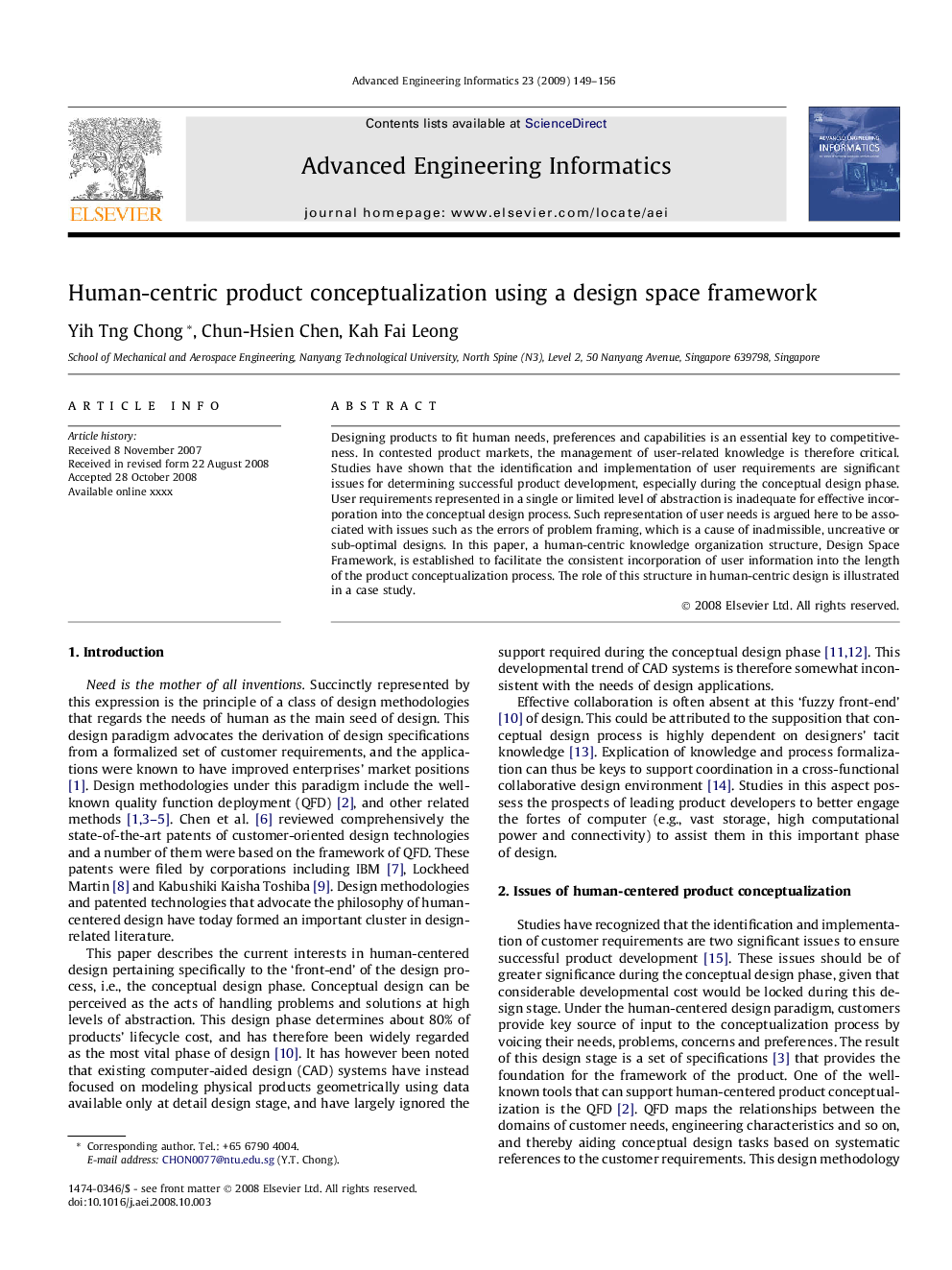| کد مقاله | کد نشریه | سال انتشار | مقاله انگلیسی | نسخه تمام متن |
|---|---|---|---|---|
| 242123 | 501806 | 2009 | 8 صفحه PDF | دانلود رایگان |

Designing products to fit human needs, preferences and capabilities is an essential key to competitiveness. In contested product markets, the management of user-related knowledge is therefore critical. Studies have shown that the identification and implementation of user requirements are significant issues for determining successful product development, especially during the conceptual design phase. User requirements represented in a single or limited level of abstraction is inadequate for effective incorporation into the conceptual design process. Such representation of user needs is argued here to be associated with issues such as the errors of problem framing, which is a cause of inadmissible, uncreative or sub-optimal designs. In this paper, a human-centric knowledge organization structure, Design Space Framework, is established to facilitate the consistent incorporation of user information into the length of the product conceptualization process. The role of this structure in human-centric design is illustrated in a case study.
Journal: Advanced Engineering Informatics - Volume 23, Issue 2, April 2009, Pages 149–156